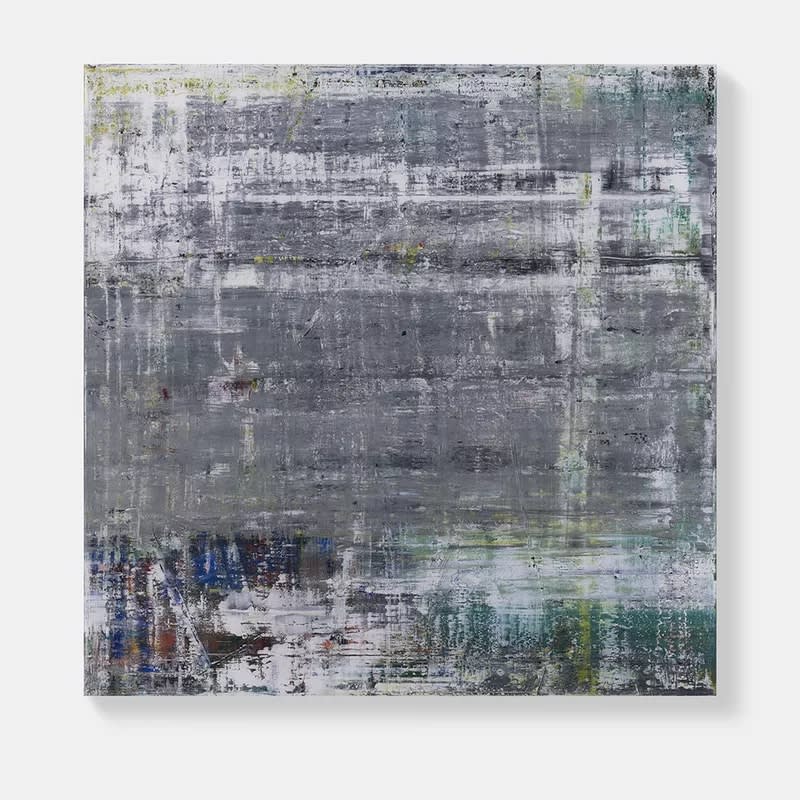Gerhard Richter DE, b. 1932
Cage (P19-3), 2020
Diasec-mounted Giclée print on aluminium composite panel
Accompanied by a certificate of authenticity
Accompanied by a certificate of authenticity
100 × 100 cm (39 2/5 × 39 2/5 in)
© Gerhard Richter
Gerhard Richter's 'Cage (P19-3)' (2020) relates to his wider 'Cage' series, which pays homage to the avant-garde composer John Cage, which Richter listened to while painting. The artwork embodies Cage's...
Gerhard Richter's 'Cage (P19-3)' (2020) relates to his wider 'Cage' series, which pays homage to the avant-garde composer John Cage, which Richter listened to while painting. The artwork embodies Cage's philosophy of embracing randomness and silence, as seen in the artist's technique's balance between control and chance.
'Cage' emerged from Richter's practice of destruction and reconstruction. Initially intending to paint atomic structures, Richter became dissatisfied and began "unpainting," pushing and pulling layers of paint across the canvas. This process of applying and scraping away paint results in a dynamic interplay of colours and textures, reflecting the artist's interest in chance and controlled accidents.
Here, the artwork showcases Richter's unique technique of using a squeegee to apply and remove layers of paint, creating a rich, textured surface with depth and complexity. 'Cage (P19-3)' represents a significant exploration of abstraction and the physical properties of paint within the artist's oeuvre. It showcases his ability to create emotionally charged works that blur the line between representation and abstraction, inviting viewers to engage with the complexity of visual perception.
'Cage' emerged from Richter's practice of destruction and reconstruction. Initially intending to paint atomic structures, Richter became dissatisfied and began "unpainting," pushing and pulling layers of paint across the canvas. This process of applying and scraping away paint results in a dynamic interplay of colours and textures, reflecting the artist's interest in chance and controlled accidents.
Here, the artwork showcases Richter's unique technique of using a squeegee to apply and remove layers of paint, creating a rich, textured surface with depth and complexity. 'Cage (P19-3)' represents a significant exploration of abstraction and the physical properties of paint within the artist's oeuvre. It showcases his ability to create emotionally charged works that blur the line between representation and abstraction, inviting viewers to engage with the complexity of visual perception.
1
of
8
